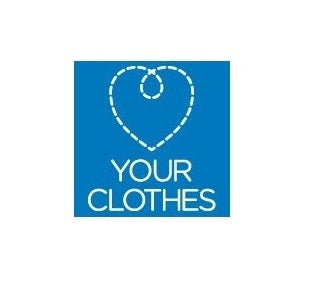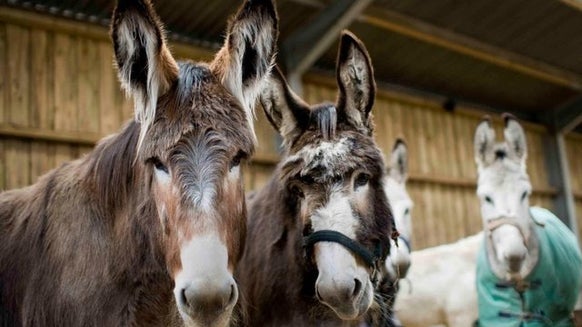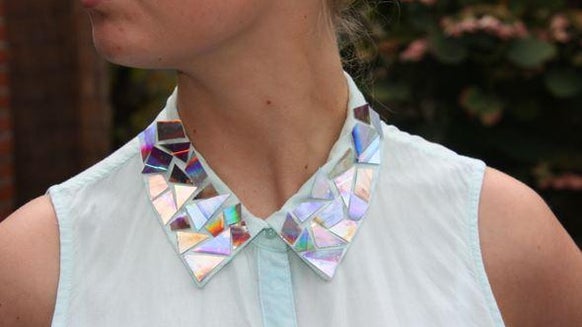Unlock the value of your wardrobe. £4,000 – Deal or No Deal?

Who wouldn’t say no to £4,000, especially when it comes to fashion? Well, we’ll let you  into a little secret...that £4,000 is currently sat in YOUR wardrobe at home, in your bedroom, at your finger tips! That sounds like a good deal of value to us.
into a little secret...that £4,000 is currently sat in YOUR wardrobe at home, in your bedroom, at your finger tips! That sounds like a good deal of value to us.
We’ve been through drawers, wardrobes, closets and our research shows that the average UK household owns around £4,000 worth of clothes. That’s quite a big deal. Plus about £1,200 of our clothes are sat gathering dust when they could be re-fashioned into new this-season’s outfits, given to new homes or if they’re ripped or faded, even recycled into speake rs (yes, speakers! - they’re made from shredded fibres). So we’ve got a plan to help us all look good, get the most out of the clothes we own and not be so tempted to throw our clothes (and money) into landfill sites. Find more details at www.loveyourclothes.org.uk
Open sesame! Squeeze more value from the clothes hiding in your wardrobe with these top 5 tips.
For more ideas on unlocking the value of your wardrobe, visit www.loveyourclothes.org.uk
Sell your clothes online to make more money.com
 There is a big need for buying pre-owned or vintage clothes, two thirds of us are already buying them and a fifth of people are selling clothing online. There’s definitely money to be made out there.
There is a big need for buying pre-owned or vintage clothes, two thirds of us are already buying them and a fifth of people are selling clothing online. There’s definitely money to be made out there.
If you’ve got a smart phone, it can be really quick and easy to snap, upload and sell in minutes – have a go and see what money you can make. Find helpful links and more at www.loveyourclothes.org.uk
Head over to the bank – a clothing bank
Any unwanted clothing, especially clothes and materials that have seen better days  and are full of holes, stained or misshapen are worth something to someone. Some clothing banks take both re-usable and damaged clothes and sort them to be sent off to the most appropriate place. One of the uses for items at the very end of their life is to be shredded and their fibres used to make music speakers or insulation! This generates valuable money for the organisation who owns the clothing bank. If you don’t know where your nearest clothing bank is, visit www.loveyourclothes.org.uk to find it. Also, a great tip is to take your unwanted clothing to the supermarket with you as most large stores tend to have clothing banks in their car parks, look out for the signs next time you go.
and are full of holes, stained or misshapen are worth something to someone. Some clothing banks take both re-usable and damaged clothes and sort them to be sent off to the most appropriate place. One of the uses for items at the very end of their life is to be shredded and their fibres used to make music speakers or insulation! This generates valuable money for the organisation who owns the clothing bank. If you don’t know where your nearest clothing bank is, visit www.loveyourclothes.org.uk to find it. Also, a great tip is to take your unwanted clothing to the supermarket with you as most large stores tend to have clothing banks in their car parks, look out for the signs next time you go.
Unlock the secret to extending the life of your garments
 It’s not how we wear our clothes that can make them seem old before their time, it’s often how we launder them which is key to making them last longer. Different fabrics behave in different ways when they’re being washed, ironed or dried.
It’s not how we wear our clothes that can make them seem old before their time, it’s often how we launder them which is key to making them last longer. Different fabrics behave in different ways when they’re being washed, ironed or dried.
Wool: Don’t wash it too often! Washing too frequently can wear out the fabric, make it lose its shape and shorten its life. Cotton: Iron to remove wrinkles but avoid ironing over stains as this will end up ‘setting’ the stains and make them permanent. Polyester: Avoid using the tumble dryer as this can cause shrinkage. Viscose: Requires delicate hand-washing using luke-warm water but avoid wringing or twisting clothes as this can rip the material. Silk: Check the label before washing as different types and blends of the material require different laundry methods.
Reading the label on clothes will help you and help to reduce the amount of clothing we send to landfill each year - £140m worth of clothing gets dumped each year. More fabric tips can be found at www.loveyourclothes.org.uk
Love Your Clothes
For more information visit www.loveyourclothes.org.uk
Twitter.com @loveyourclothes
Facebook.com/LoveYourClothesUK
Pinterest.com/LoveClothesUK
The Love Your Clothes campaign has been developed together with industry organisations to help change the way the UK consumers buy, use and dispose of their clothing. The ultimate aim is to reduce the environmental impact of clothing across the UK and influence a more circular approach to clothing globally.








